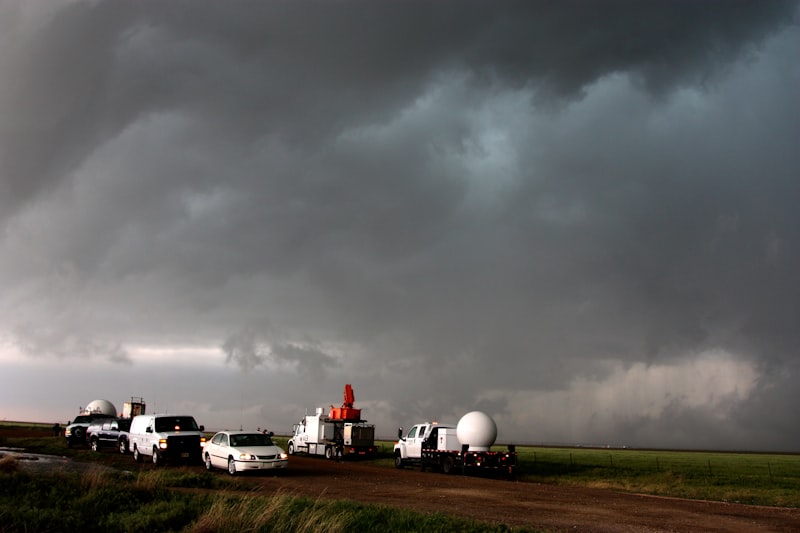Alpine fauna, those hardy creatures that inhabit the towering peaks and rugged landscapes of mountainous regions, face a unique set of challenges in the era of climate change. These environments, characterized by extreme cold, limited oxygen, and short growing seasons, are home to a remarkable array of species that have evolved ingenious strategies to survive and thrive.
One of the most remarkable adaptations of alpine fauna is their ability to regulate body temperature in the face of fluctuating environmental conditions. Take, for instance, the mountain goat. These agile climbers have thick, insulating fur that keeps them warm during bitter winters and sheds to a lighter coat in summer, ensuring they don’t overheat during strenuous climbs up rocky cliffs.
But it’s not just physical adaptations that set alpine fauna apart; behavioral changes also play a crucial role. Marmots, known for their burrowing behavior, adjust their hibernation patterns based on changing snowmelt patterns. By entering hibernation later or emerging earlier, they synchronize their life cycles with the availability of food, crucial for their survival and reproduction.
Interestingly, some alpine species exhibit what scientists call phenotypic plasticity, where individuals within a species can adapt their behavior or physiology to environmental changes within their lifetime. The rock ptarmigan, a bird that inhabits high-altitude regions, changes the color of its plumage from brown in summer to white in winter. This camouflage helps it evade predators while blending seamlessly with the snow-covered landscape.
Moreover, the interconnectedness of alpine ecosystems means that adaptations in one species can have cascading effects throughout the food web. For instance, changes in the timing of plant blooming due to warmer temperatures can impact the availability of food for herbivores like the Alpine ibex, which in turn affects predators such as the golden eagle.
Surviving the Chill: How Alpine Animals Thrive Amid Climate Shifts
In the world’s highest and coldest environments, alpine animals demonstrate remarkable adaptations that enable them to not just survive, but thrive amidst the ever-changing climate. Imagine a landscape where temperatures swing from scorching heat to bone-chilling cold within hours. It’s here that these animals, like the mighty snow leopard and the elusive alpine ibex, have evolved unique strategies to conquer the elements.
Take the snow leopard, for instance. Known as the ghost of the mountains, it prowls through the steep, rocky terrains of the Himalayas and Central Asia. Its thick fur acts as a natural insulator, keeping it warm during freezing nights and icy winds. Those large paws? They function like built-in snowshoes, allowing it to effortlessly navigate deep snowdrifts without sinking.
Then there’s the alpine ibex, a master of agility. With its powerful hooves gripping sheer rock faces, this goat-like creature fearlessly scales cliffs to reach nutrient-rich vegetation that thrives in high altitudes. Its coat, a mix of dense underfur and longer guard hairs, provides insulation while allowing quick drying after sudden snowfalls or rain showers.
But surviving in the alpine isn’t just about physical adaptations; it’s also about behavioral resilience. Many alpine animals have seasonal movements, migrating to lower altitudes during harsh winters and returning to higher grounds when temperatures are milder. This movement ensures they can access food sources that vary with the seasons, from tender alpine herbs to hardy shrubs.
Climate change, however, poses new challenges. As temperatures rise, alpine habitats shift upwards, squeezing these animals into smaller spaces. The delicate balance they’ve maintained for millennia is now threatened by shrinking glaciers and altered precipitation patterns. How will they adapt to these rapid changes? Only time and ongoing research will provide the answers.
Adaptive Wonders: Alpine Fauna’s Resilience in Changing Climates
Have you ever wondered how alpine animals thrive in some of the harshest environments on Earth? Alpine fauna, including species like the snow leopard, ibex, and mountain goat, possess remarkable adaptations that allow them to survive and even flourish in the challenging conditions of high-altitude regions.
One of the most awe-inspiring aspects of these creatures is their ability to adapt to changing climates. Unlike animals in more temperate zones, alpine fauna face extreme fluctuations in temperature, limited food sources, and treacherous terrain. Yet, they have evolved over generations to develop unique physiological and behavioral traits that equip them for survival.
Take the snow leopard, for instance. This majestic feline not only navigates the steep, rocky slopes of the Himalayas and other mountain ranges but also has thick fur that insulates against the cold. Its large paws act like snowshoes, allowing it to move stealthily across deep snow. These adaptations enable the snow leopard to hunt agile prey like mountain goats and blue sheep, sustaining itself in environments where few other predators can thrive.
Similarly, the mountain goat, with its specialized hooves designed for climbing steep cliffs, exemplifies adaptation at its finest. These hooves provide incredible traction, allowing the mountain goat to scale rocky surfaces with ease and escape predators such as wolves and lynxes. Its thick coat protects against harsh winds and retains body heat, essential for survival in high-altitude habitats.
In addition to physical adaptations, alpine fauna exhibit behavioral strategies that enhance their resilience. Many species migrate to lower altitudes during harsh winters, where food is more plentiful and conditions are less severe. This seasonal movement helps them conserve energy and increase their chances of survival during lean months.
The resilience of alpine fauna in the face of climate change is a testament to the power of adaptation in the natural world. As temperatures rise and habitats shift, these animals continue to adjust their behaviors and physiology to maintain a foothold in their challenging environments. Studying their adaptations not only provides insights into evolutionary biology but also underscores the importance of conservation efforts to protect these unique species for future generations.
This article aims to capture the reader’s interest by highlighting the remarkable adaptations of alpine fauna in a conversational and engaging manner, while also incorporating relevant SEO keywords naturally throughout the text.
Frozen Frontiers: The Evolutionary Secrets of Alpine Wildlife
In the vast, icy expanses of the alpine regions, wildlife thrives in conditions that challenge even the hardiest of creatures. From the majestic snow leopard to the resilient mountain goat, these animals have evolved remarkable adaptations that allow them to not just survive, but thrive, in this harsh environment.
One of the most striking examples is the snow leopard, a master of camouflage with its thick fur patterned to blend seamlessly into the rocky terrain and snow-covered slopes. This elusive predator stalks its prey with unmatched grace, its padded paws allowing it to move silently through the snow. Its evolutionary journey has equipped it with acute senses, from sharp vision adapted to low light conditions to a keen sense of hearing that detects even the faintest rustle of movement.
High above, the mountain goat navigates the treacherous cliffs with astonishing agility. Its hooves are specially adapted with hard outer edges that provide traction on steep, rocky surfaces. This surefootedness allows it to graze on sparse vegetation found at high altitudes, where few other animals dare to venture. Through generations of adaptation, these goats have developed a respiratory system that efficiently utilizes thin mountain air, ensuring their survival in oxygen-deprived environments.
What about the elusive alpine ibex, with its impressive curved horns, which serve both as a defense mechanism against predators and as a symbol of dominance during mating season? These creatures have adapted to survive in some of the world’s most extreme environments, and their ability to thrive in such conditions is a testament to the power of evolutionary biology.
High Altitude Heroes: How Alpine Fauna Navigate Climate Challenges
Take the iconic mountain goat, for instance. With their surefooted agility and strong hooves, these creatures can scale steep cliffs with ease, accessing sparse vegetation that few other animals can reach. Their woolly coats provide insulation against the biting cold, ensuring they stay warm even when winds whip across the peaks.
Then there’s the elusive snow leopard, a master of camouflage in its snowy habitat. With its thick fur and large paws that act as natural snowshoes, the snow leopard silently stalks its prey across rocky slopes. Adapted to endure temperatures that plummet well below freezing, these big cats exemplify resilience in the face of extreme cold.
Meanwhile, alpine marmots burrow deep into the earth, creating intricate tunnel systems that provide refuge from both predators and the elements. Their thick fur and layers of fat insulate them from the cold, allowing them to survive hibernation through the long winter months when food is scarce.
These high-altitude heroes aren’t just surviving; they’re thriving in a landscape that tests the limits of endurance. Their ability to adapt to such harsh conditions serves as a testament to the wonders of evolution and the resilience of life itself. As we marvel at these adaptations, we gain a deeper appreciation for the delicate balance that sustains life in Earth’s most extreme environments.
Beyond the Snowline: Unveiling the Strategies of Alpine Animals
Have you ever wondered how animals survive in the harsh, icy realms high up in the mountains? It’s not just about enduring the cold; it’s a masterclass in adaptation and survival. Alpine animals, from the majestic snow leopard to the elusive mountain goat, have evolved remarkable strategies to thrive in these extreme environments.
One of the most fascinating adaptations is the snowshoe hare’s change of fur color. During the winter months, its fur transforms from brown to a brilliant white, allowing it to blend seamlessly with the snowy landscape. This clever camouflage helps it evade predators like the cunning red fox, giving it a fighting chance against the odds.

For animals like the ibex, agility is key. These sure-footed creatures navigate steep slopes with ease, thanks to their uniquely shaped hooves that provide them with exceptional grip. Watching an ibex effortlessly traverse rocky terrain is like witnessing nature’s own acrobat in action.
But survival in the alpine zone isn’t just about physical prowess. It’s also about energy conservation. Take the stoic marmot, for instance. These furry rodents spend much of the harsh winter months hibernating in burrows dug beneath the snow. By lowering their metabolic rate, they conserve precious energy until spring returns with its bounty of fresh vegetation.
Speaking of food, the golden eagle reigns supreme as a top predator in the mountains. With keen eyesight and powerful talons, it can spot and capture prey such as mountain hares or even young deer. Its ability to soar effortlessly on thermal updrafts is a testament to its mastery of the mountain skies.
And then there’s the mountain pine beetle, a tiny yet formidable force that can wreak havoc on alpine forests. By tunneling beneath the bark of trees, these insects disrupt the tree’s nutrient flow, eventually causing widespread damage. This tiny beetle may seem insignificant, but its impact on the delicate alpine ecosystem is profound.
Climate Change Chronicles: Alpine Fauna’s Survival Strategies Revealed

Imagine the snow leopard, a master of stealth and agility, navigating treacherous slopes where every move counts. Its thick fur insulates against biting cold, blending seamlessly with snowy landscapes to stalk prey undetected. Such adaptation isn’t just about camouflage; it’s survival sculpted by millennia of evolutionary artistry.
Then there’s the mountain goat, defying gravity with hoof-gripping prowess that allows it to scale sheer cliffs effortlessly. Adapted for extreme terrain, its sharp hooves provide traction on icy surfaces, while a keen sense of balance turns seemingly impossible climbs into routine foraging grounds.
These creatures aren’t merely surviving; they’re thriving in environments where change is the only constant. They teach us resilience in the face of adversity, reminding us of nature’s unwavering spirit. As temperatures rise and habitats shift, their strategies become lessons in adaptation—blueprints for a world grappling with environmental uncertainty.
What can we learn from these alpine marvels? Adaptability isn’t just a trait; it’s a mindset. Like the snow leopard, we must blend into our changing world, finding innovative ways to preserve what’s precious. Like the mountain goat, we must embrace challenges head-on, using every tool at our disposal to navigate the uncertain paths ahead.
Frequently Asked Questions
What are the main adaptations of alpine fauna to climate change?
Learn about the main adaptations of alpine fauna to climate change, including shifts in habitat, changes in breeding seasons, altered foraging behaviors, and adaptations in body size and metabolism.
How does climate change affect the food sources of alpine animals and their adaptation strategies?
This FAQ provides insights into how climate change impacts the food sources of alpine animals and their adaptation strategies. It discusses the specific changes in vegetation and availability of prey due to shifting temperatures and precipitation patterns, highlighting how animals are adjusting their behaviors, such as altering foraging habits or shifting to higher elevations, to cope with these environmental changes.
Which species show the most resilience to climate change in alpine environments?
Discover which species exhibit the highest resilience to climate change in alpine environments, emphasizing their adaptive traits and survival strategies.
How do alpine animals cope with changing temperatures and weather patterns?
Learn how alpine animals adapt to changing temperatures and weather patterns, showcasing their unique physiological and behavioral strategies to thrive in harsh mountain environments.
What behavioral changes have been observed in alpine fauna due to climate change?
Explore how climate change has influenced the behavior of alpine fauna, revealing shifts in migration patterns, feeding habits, and breeding seasons. Discover the adaptive strategies animals employ to survive in changing mountain environments.


